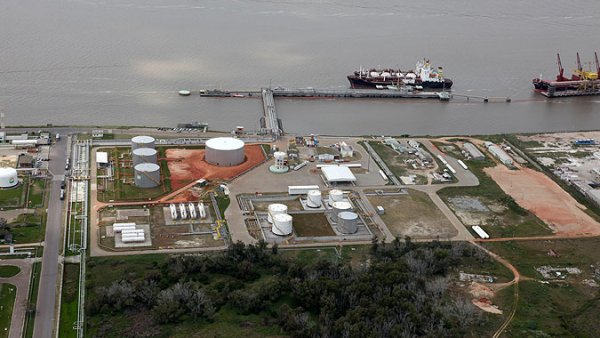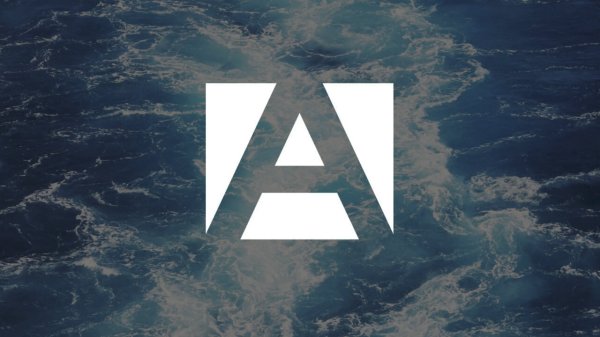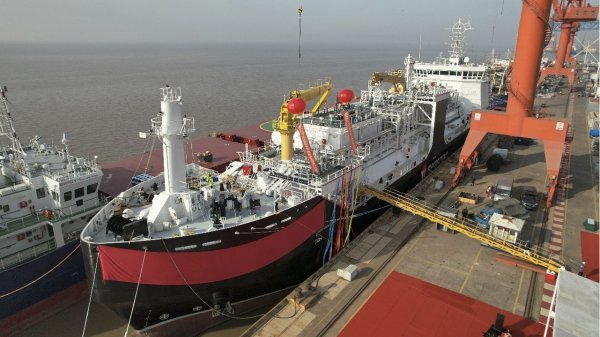ME-GIE engine passes gas trials on ethane, opens door for new applications
Engine can run on almost any form of waste gas, including light hydrocarbons or VOCs emitted from crude oil.
Source: MAN Diesel & Turbo
The world's first ME-GIE (-Gas Injection Ethane) two-stroke engine has successfully passed gas trials on board the Gaschem Beluga, an LEG (liquefied ethylene gas) carrier, while sailing between Houston and the Bahamas.
The Mitsui-MAN B&W 7G50ME-C9.5-GIE unit is the first in a series of two engines acting as main propulsion for two such LEG carriers of 36,000 m3 ordered by Hartmann Reederei of Germany and Ocean Yield of Norway, and constructed at Sinopacific Offshore Engineering (SOE) in China.
MAN Diesel & Turbo personnel monitored proceedings aboard the vessel and reported successful operation on ethane with the ME-GIE responding as expected to different loads. No gas leaks were observed while ethane levels in the double-walled piping were constant and comfortably under the gas's LEL (Lower Explosive Limit).
The Gaschem Beluga subsequently crossed the Atlantic on its way to Europe, powered solely by ethane, and has already achieved a total of 550 operational hours.
Captain Ulrich Adami, Fleet Manager of Hartmann Reederei, said: "Developing and finalizing this type of vessel was hard work for the whole team and the process took several years. Therefore, we already knew that GasChem Beluga is a very good ship with a pioneering technology. But there is always a difference between a plan and its successful implementation. We are proud that we achieved the expected results entirely."
Rene Sejer Laursen, Sales & Promotion Manager, MAN Diesel & Turbo, said: "The reports from the ME-GIE trials and first operational experiences are very encouraging and confirm our faith in this groundbreaking technology. While the engine is primarily designed for the combustion of ethane gas, our research shows that it is also possible to operate the engine on other gas types. This development is particularly exciting as it opens the prospect for multi-fuel combustion, including the combustion of methane, waste gas, and volatile organic compounds (VOCs)."
Indeed, MAN Diesel & Turbo's research recently confirmed that ME-GIE operation on VOCs is feasible, making it an eminently suitable main driver within the shuttle tanker and VLCC segments.
The Gaschem Beluga is equipped with a propulsion package supplied by MAN Diesel & Turbo, Frederikshavn (Denmark). It includes a remote control system AT3000, a VBS 1350 - ODS Mk5 CP Propeller, and a shaft generator with frequency converter that enables it to run on variable speed between 80 to 100rpm.
MAN Diesel & Turbo currently has eight ME-GIE engines on order.
The benefits of the ME-GIE's Diesel-type combustion can now be fully exploited by its ability to operate on almost any gas quality - without any reduction in efficiency - and through a complete combustion maintained by a relatively high gas-injection pressure.
The engine will be able to run on a mixture of LPG and methane, or ethane, with an unchanged gas-mode efficiency. Such a mixture may comprise as much as 50% LPG, while MAN Diesel & Turbo's findings thus far indicate that an even greater LPG percentage can be used.
Significant potential
MAN Diesel & Turbo sees significant opportunities in the development of the ME-GIE as the engine can also run on almost any form of waste gas. Such gases could be the light hydrocarbons or volatile organic compounds (VOCs) emitted from crude oil during storage and during the loading/unloading of crude oil. This opens the door for new applications for the engine in, for example, shuttle tankers, for power generation in remote power plants, or in off-shore applications - such as floating production storage and offloading vessels (FPSOs) - where VOC is abundant and poses a potential environmental hazard.
Ethane
While MAN B&W ME-GI engines have been designed for use by methane, operation on ethane is a new development. After methane, ethane is the second-largest component of natural gas with a content that varies from < 1% to > 6% by volume. However, before natural gas can be used as a commercial fuel, it must be processed to remove impurities, including ethane. Like many hydrocarbons, ethane is isolated on an industrial scale from natural gas, usually by liquefaction at cryogenic temperatures. Its chief use is within ethylene production.
MAN Diesel & Turbo reports that ethane was chosen as fuel for the LEG carriers, in preference to HFO, due to its more competitive pricing. As a fuel, its emissions profile is similar to methane and contains negligible sulphur and comparatively lower CO2.
ME-GIE Technology
The ME-GIE engine features MAN Diesel & Turbo's newly developed pump vaporizer unit (PVU) that matches the requirements for the supply of high-pressure LNG to the ME-GIE engine. The PVU supercedes previous fuel-gas supply systems with its low installation costs, smaller space requirement and full pump redundancy. Tier III operation can also be met in combination with selective catalytic reduction (SCR) systems, either low- or high-pressure SCR.
The engine can be delivered in the 5-90 MW power range.
The ME-GI engine - the new industrial standard
The ME-GIE's technology is based on that of MAN Diesel & Turbo's successful ME-GI (-Gas Injection) engine that, with over 200 engines ordered, has set a new industrial standard for two-stroke propulsion engines aboard LNG carriers and container vessels. The ME-GI engine provides shipowners and operators with a peerless solution within environmentally friendly and high-efficiency, two-stroke technology.
With the ME-GI engine, two-stroke development has taken a step further by combining the unique properties of multi-fuel combustion and the well-known reliability of Man Diesel & Turbo's ME-engine. The Diesel principle provides the ME-GI engine with high operational stability and efficiency, including during load changes and fuel change-over, while defining properties such as a stable change-over from fuel to gas with no fuel-penalties are maintained. The negligible fuel slip of the ME-GI engine makes it the most environmentally friendly, two-stroke technology available.
Image: ME-GIE gas trials were carried out aboard the Gaschem Beluga
The world's first ME-GIE (-Gas Injection Ethane) two-stroke engine has successfully passed gas trials on board the Gaschem Beluga, an LEG (liquefied ethylene gas) carrier, while sailing between Houston and the Bahamas.
The Mitsui-MAN B&W 7G50ME-C9.5-GIE unit is the first in a series of two engines acting as main propulsion for two such LEG carriers of 36,000 m3 ordered by Hartmann Reederei of Germany and Ocean Yield of Norway, and constructed at Sinopacific Offshore Engineering (SOE) in China.
MAN Diesel & Turbo personnel monitored proceedings aboard the vessel and reported successful operation on ethane with the ME-GIE responding as expected to different loads. No gas leaks were observed while ethane levels in the double-walled piping were constant and comfortably under the gas's LEL (Lower Explosive Limit).
The Gaschem Beluga subsequently crossed the Atlantic on its way to Europe, powered solely by ethane, and has already achieved a total of 550 operational hours.
Captain Ulrich Adami, Fleet Manager of Hartmann Reederei, said: "Developing and finalizing this type of vessel was hard work for the whole team and the process took several years. Therefore, we already knew that GasChem Beluga is a very good ship with a pioneering technology. But there is always a difference between a plan and its successful implementation. We are proud that we achieved the expected results entirely."
Rene Sejer Laursen, Sales & Promotion Manager, MAN Diesel & Turbo, said: "The reports from the ME-GIE trials and first operational experiences are very encouraging and confirm our faith in this groundbreaking technology. While the engine is primarily designed for the combustion of ethane gas, our research shows that it is also possible to operate the engine on other gas types. This development is particularly exciting as it opens the prospect for multi-fuel combustion, including the combustion of methane, waste gas, and volatile organic compounds (VOCs)."
Indeed, MAN Diesel & Turbo's research recently confirmed that ME-GIE operation on VOCs is feasible, making it an eminently suitable main driver within the shuttle tanker and VLCC segments.
The Gaschem Beluga is equipped with a propulsion package supplied by MAN Diesel & Turbo, Frederikshavn (Denmark). It includes a remote control system AT3000, a VBS 1350 - ODS Mk5 CP Propeller, and a shaft generator with frequency converter that enables it to run on variable speed between 80 to 100rpm.
MAN Diesel & Turbo currently has eight ME-GIE engines on order.
The benefits of the ME-GIE's Diesel-type combustion can now be fully exploited by its ability to operate on almost any gas quality - without any reduction in efficiency - and through a complete combustion maintained by a relatively high gas-injection pressure.
The engine will be able to run on a mixture of LPG and methane, or ethane, with an unchanged gas-mode efficiency. Such a mixture may comprise as much as 50% LPG, while MAN Diesel & Turbo's findings thus far indicate that an even greater LPG percentage can be used.
Significant potential
MAN Diesel & Turbo sees significant opportunities in the development of the ME-GIE as the engine can also run on almost any form of waste gas. Such gases could be the light hydrocarbons or volatile organic compounds (VOCs) emitted from crude oil during storage and during the loading/unloading of crude oil. This opens the door for new applications for the engine in, for example, shuttle tankers, for power generation in remote power plants, or in off-shore applications - such as floating production storage and offloading vessels (FPSOs) - where VOC is abundant and poses a potential environmental hazard.
Ethane
While MAN B&W ME-GI engines have been designed for use by methane, operation on ethane is a new development. After methane, ethane is the second-largest component of natural gas with a content that varies from < 1% to > 6% by volume. However, before natural gas can be used as a commercial fuel, it must be processed to remove impurities, including ethane. Like many hydrocarbons, ethane is isolated on an industrial scale from natural gas, usually by liquefaction at cryogenic temperatures. Its chief use is within ethylene production.
MAN Diesel & Turbo reports that ethane was chosen as fuel for the LEG carriers, in preference to HFO, due to its more competitive pricing. As a fuel, its emissions profile is similar to methane and contains negligible sulphur and comparatively lower CO2.
ME-GIE Technology
The ME-GIE engine features MAN Diesel & Turbo's newly developed pump vaporizer unit (PVU) that matches the requirements for the supply of high-pressure LNG to the ME-GIE engine. The PVU supercedes previous fuel-gas supply systems with its low installation costs, smaller space requirement and full pump redundancy. Tier III operation can also be met in combination with selective catalytic reduction (SCR) systems, either low- or high-pressure SCR.
The engine can be delivered in the 5-90 MW power range.
The ME-GI engine - the new industrial standard
The ME-GIE's technology is based on that of MAN Diesel & Turbo's successful ME-GI (-Gas Injection) engine that, with over 200 engines ordered, has set a new industrial standard for two-stroke propulsion engines aboard LNG carriers and container vessels. The ME-GI engine provides shipowners and operators with a peerless solution within environmentally friendly and high-efficiency, two-stroke technology.
With the ME-GI engine, two-stroke development has taken a step further by combining the unique properties of multi-fuel combustion and the well-known reliability of Man Diesel & Turbo's ME-engine. The Diesel principle provides the ME-GI engine with high operational stability and efficiency, including during load changes and fuel change-over, while defining properties such as a stable change-over from fuel to gas with no fuel-penalties are maintained. The negligible fuel slip of the ME-GI engine makes it the most environmentally friendly, two-stroke technology available.
Image: ME-GIE gas trials were carried out aboard the Gaschem Beluga

|
IMO approves pricing mechanism based on GHG intensity thresholds
Charges to be levied on ships that do not meet yearly GHG fuel intensity reduction targets. |
|
|
|
||

|
VARO Energy expands renewable portfolio with Preem acquisition
All-cash transaction expected to complete in the latter half of 2025. |
|
|
|
||

|
NYK trials biofuel in milestone coal carrier test
Vessel is used to test biofuel for domestic utility company. |
|
|
|
||

|
H-Line Shipping orders LNG bunkering vessel
Vessel with 18,000-cbm capacity to run on both LNG and MDO. |
|
|
|
||

|
How to engineer and manage green shipping fuels | Stanley George, VPS
Effective management strategies and insights for evolving fuel use. |
|
|
|
||

|
Swedish government bans scrubber wastewater discharges
Discharges from open-loop scrubbers to be prohibited in Swedish waters from July 2025. |
|
|
|
||

|
MAN Energy Solutions achieves 100% load milestone for ammonia engine
Latest tests validate fuel injection system throughout the entire load curve. |
|
|
|
||

|
Petrobras secures ISCC EU RED certification for B24 biofuel blend at Rio Grande
Blend consisting of 24% FAME is said to have been rigorously tested to meet international standards. |
|
|
|
||

|
Stolt-Nielsen to fully control Avenir LNG with acquisition
Share purchase agreement to buy all shares from Golar LNG and Aequitas. |
|
|
|
||

|
Bureau Veritas supports launch of CIMC SOE's LNG bunkering vessel
Handover of Seaspan Energy's cutting-edge 7,600-cbm vessel completed. |
|
|
|
||

